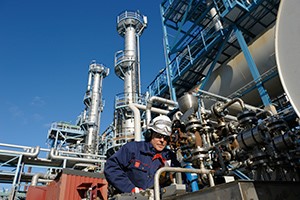PPE for the oil and gas industry

Many hazards in the oil and gas industry can be reduced with the right personal protective equipment (PPE). Training workers to understand risks and safety procedures can greatly impact workplace safety.
Some of the most common PPE-related hazards in the oil and gas industry include chemicals, welding, noise confined spaces, and sharp, flying, and falling objects. The Occupational Safety and Health Administration (OSHA) offers the following PPE recommendations for these hazards:
• Chemicals – When mixing materials like drilling mud and chemicals, wear safety goggles, gloves, respiratory protection, and long sleeves. While working with lime or caustics, also wear a faceshield and protective clothing. For the best protection, make sure to wear PPE properly. Respiratory masks should create a secure seal to the face and safety glasses should not be worn under goggles, but should be used under faceshields
• Welding – Welders are exposed to a variety of hazards, such as burns, shocks, respiratory risks, and radiation. When welding, wear heat-resistant welding gloves and a welding helmet
• Noise – Rig workers are often required to wear hearing protection. If a noise hazard exists, post signs to remind crews of the risk, make PPE visibly available, and encourage workers to wear hearing protection, even when exposed to noise for only a short time. It is also important that employees are trained to properly insert ear plugs. When ear plugs are not worn correctly they do not provide the appropriate protection from noise hazards
• Confined spaces – Before entering a confined space, always test the atmospheric conditions with appropriate gas instrumentation. Hearing protection may also be necessary if noise is amplified within the space
• Sharp, flying, and falling objects – Workers should wear work gloves to protect their hands from cuts and abrasions. Reduce injuries from flying and falling objects by wearing eye protection, hard-toed work boots, and hard hats.
In addition to wearing the correct PPE, workers should also inspect the equipment before using. Examine all PPE for damage like breaks, fraying, holes, stretching, and cracks. This type of damage can go unnoticed and reduce the safety of the equipment.



